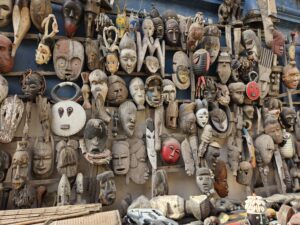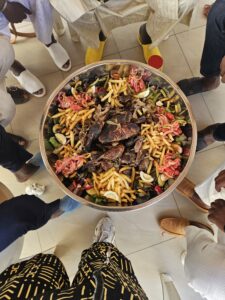Senegal (2): Memories and lingering thoughts
May 2, 2024
by Scott JIAXIN
As the semester comes to an end, a bittersweet feeling begins to emerge. On one hand, I would want to take a break from the constant travelling, from all the stress that comes with adaptation to a new environment and a new country. On the other hand, the nagging thought of not being able to spend more time in a country that has so much more left to offer makes me want to stay here longer, so that I can better immerse myself in a culture that is so different from mine.
Dakar has been a whirlwind of adventures. Whether it was the bustling roads, the sun-kissed beaches, or the savage nature of Sine Saloum, there was always something else that was different from what came before. The ancient african masks that attest to flourishing cultures before European colonisation in the MAHICAO was immediately accompanied by the lush greenery of the mangrove forests of Simal.
While I was not revising for my exams, I used the opportunity to participate in activities with my host family, of which there were many since there were multiple public holidays during our stay. During Eid, we travelled from household to household, stopping by each one to greet the family as we chitchated and ate sweet and savoury treats. On Good Friday, my catholic family invited roughly 50 people to celebrate until 6 a.m while dancing and singing. I also had the chance to watch them play football with some local friends, an opportunity that I would have loved to participate in if it were not for the lack of soccer shoes.
During this time, I also went out with my Senegalese buddy, Maurice. Each student was paired with a Senegalese local friend that studied in the same school as we did: ISM. It was meant to facilitate cultural exchange and also deepen our understanding of the local culture by using like minded teenagers. We went to a senegalese party where we danced to both traditional senegalese music, mainly composed of drums and rhythmic beats, as well as modern dance music. When I was bored, I would take a look by walking through the various local markets, notably Soumbedioune and Sandaga, where one can find all that he needs. Even though I would say that I was quick to learn the tricks and tips to bargain a good deal, it still took some time as I bought a few african masks for a rather unreasonable price. However, I compensated that with further purchases for me and my family; my suitcase would definitely not have a good time trying to hold everything together during the flight back home.

More importantly, I slowly became accustomed to the Senegalese rhythm. Hectic, dynamic, and even unsettling at first, it became a lot more digestible as I began to understand, subconsciously even, what to do at what precise moment. For example, calling a taxi, or initiating salutations with store-owners. While these little moments might seem insignificant, I would believe that they are true indicators of a cultural immersion: to capture and reproduce these little everyday codes that embed the Senegalese DNA.
Whether it be the beautiful corniche with the Atlantic ocean gently crashing onto the rocky cliffs or the chariots that often cross by my road to school, Senegal is unique in its own way. Fresh local produce is often juxtaposed by neatly arranged boutiques on the same street, and the Car Rapide, flamboyant in their design, is often contrasted by sleek modern cars that one can find in any major city in the world. Senegalese women that wear the traditional boubou garment and who still carry things on their head are crossed by young men that wear standard costumes and ties. It is a society of change and evolution, which is even better reflected by the perpetual drilling of renovation that could be heard and seen everywhere in Dakar: half-finished buildings, apartments waiting to be furnished, and other buildings on route to being demolished to be replaced by another.

As I bid farewell to this country, I can’t help but make links with Morocco and France. Senegal, the final destination of our trajectory, represents the start of everything: of migration routes, of the agricultural chain of production, of an attachment to a style of life that still remains far from the frenesie of a globalised metropolis. This nugget of information has always put a smile on my face when I reflect on APA’s multi-country program.





